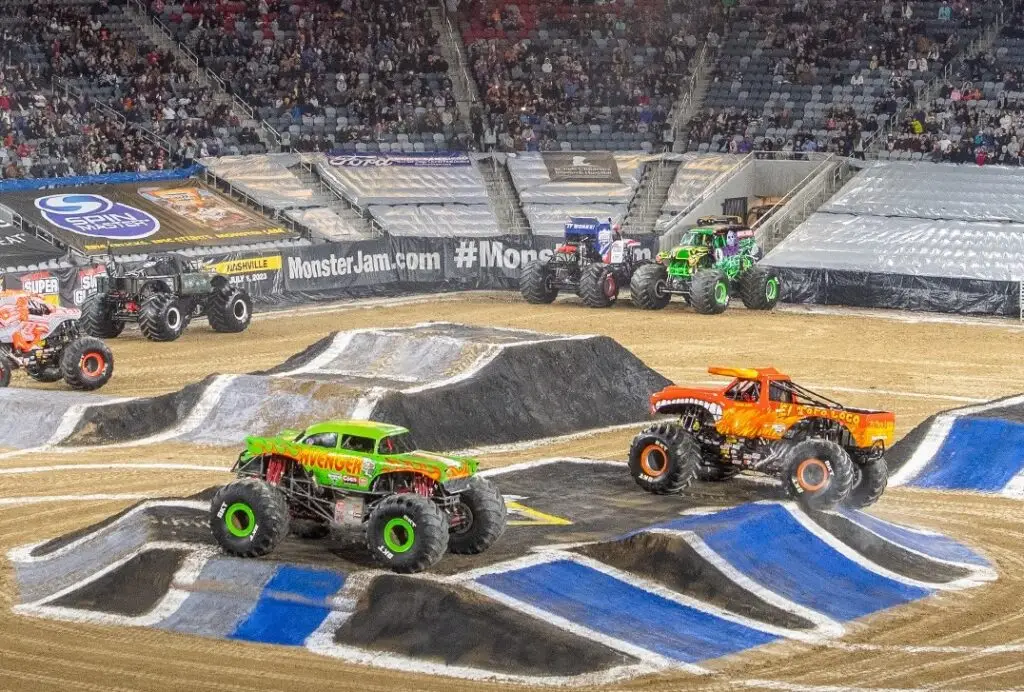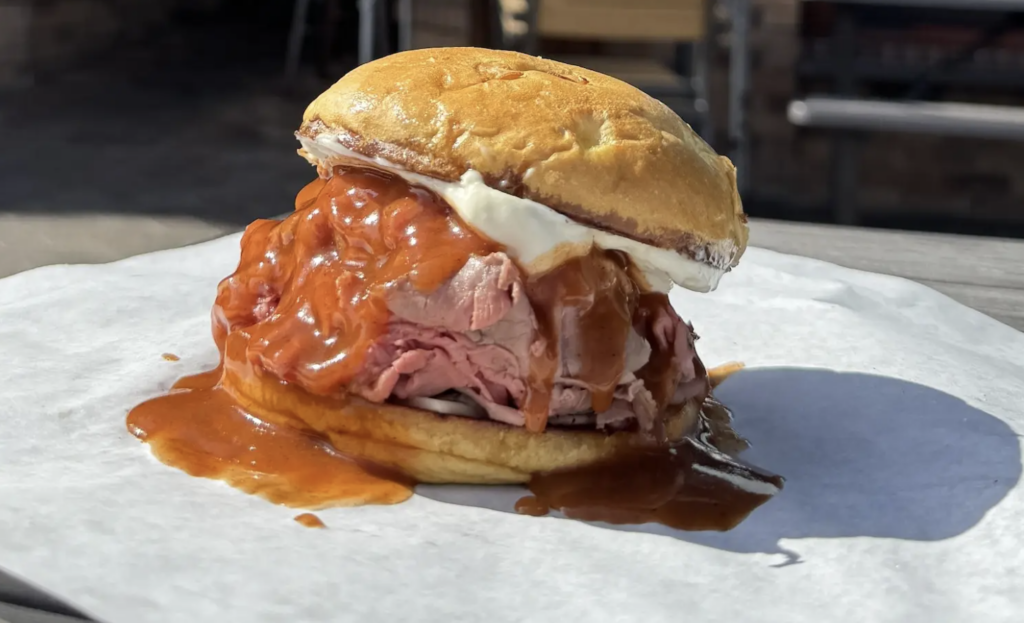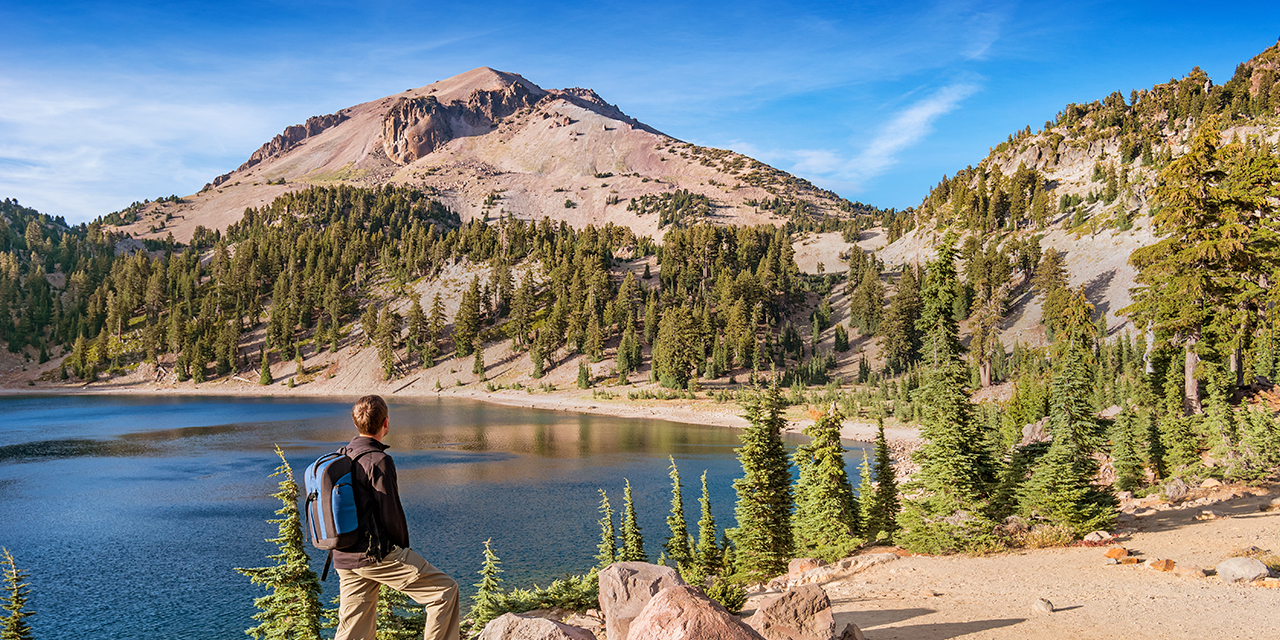Franklin D. Roosevelt once said, “There is nothing so American as our national parks.” But one could argue that there is nothing so Californian—after all, we have nine of ’em, more than any other state. Each offers spectacular landscapes for outdoorsy types to explore, whether you’re road-tripping and looking for scenic pit stops, seeking a challenging summit, or wanting to reconnect with nature. From Yosemite’s towering granite peaks to Kings Canyon’s marble caves, here is your complete guide to visiting all of California’s national parks.
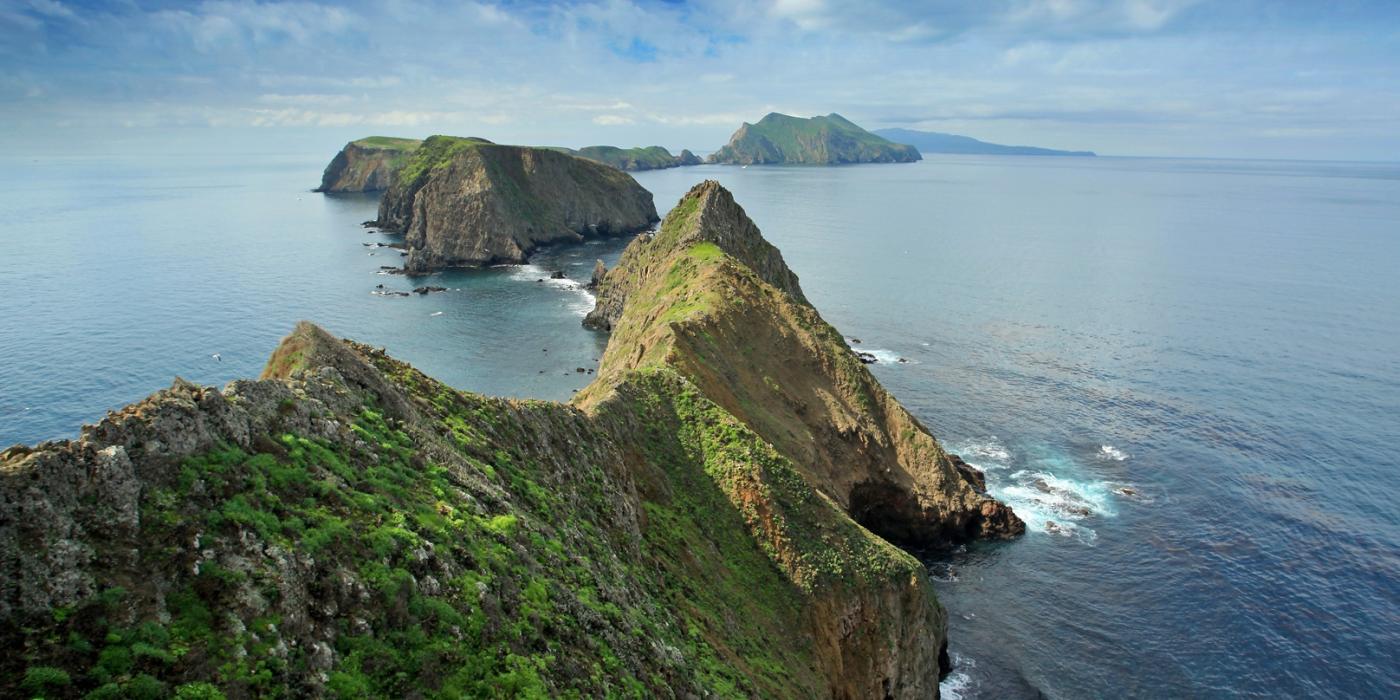
Channel Islands National Park
As California’s least-visited national park, Channel Islands supplies a near-untouched glimpse of pre-industrial California. Situated across five islands that were historically inhabited by the Chumash people, the park encompasses 346 miles of land accessible by ferry or private boat.
Popular activities include beachside camping, kayaking through sea caves, and hiking to scenic viewpoints like Inspiration Point on Anacapa Island. The park is home to endemic wildlife like the adorable Santa Rosa Island fox, deer mouse, and several species of birds. The underwater ecosystem is equally fascinating—more than 100 shipwrecks and mesmerizing reefs make it a prime spot for divers.
Tips for Visiting Channel Islands
- Getting There: Ferry from Oxnard or Ventura
- Fees: No entrance fee; ferry tickets start at $70 through Island Packers
- Best Time to Visit: Spring and summer (blue whale–watching takes place April through September)
- Must-Visit Attractions: Inspiration Point, Scorpion Anchorage Harbor, Painted Cave, Anacapa Island Lighthouse
Map of Channel Islands National Park
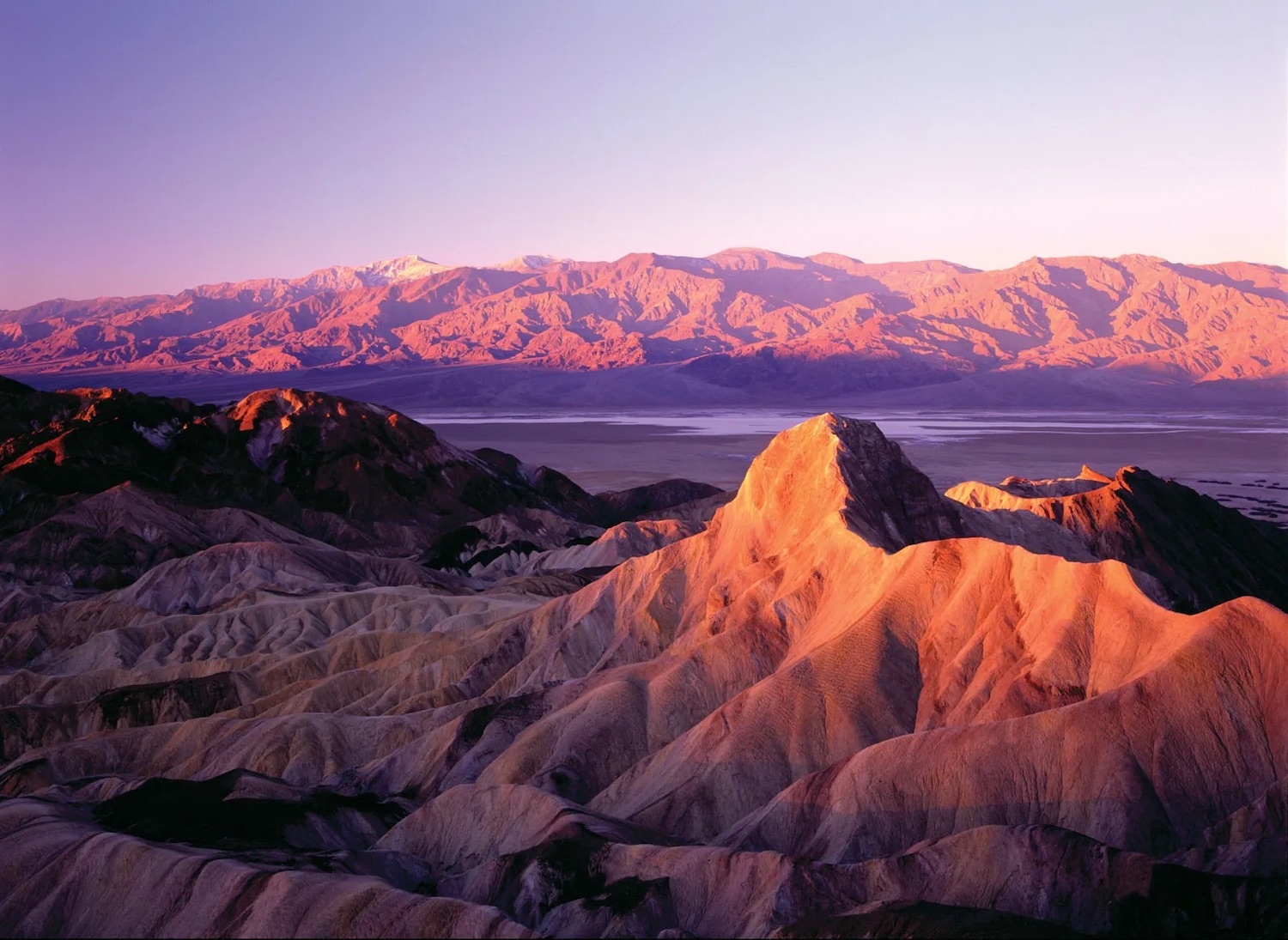
Death Valley National Park
The hottest place on Earth, Death Valley National Park is a land of extremes, from the lowest point in North America at Badwater Basin to the soaring Panamint mountain range. While much of the park may seem lifeless at first blush, it’s teeming with critters, such as bighorn sheep, jackrabbits, and sidewinder rattlesnakes.
Stargazing, camping, and off-roading are common activities here, and be sure to check out Zabriskie Point at sunrise for an unforgettable view. The Furnace Creek Visitor Center offers an ideal spot for a photo op next to the iconic Death Valley thermostat and is the last vestige of civilization before you lose cell service in deeper areas of the park. Embrace your inner geek and follow the self-guided Star Wars filming location tour, and don’t miss Artists Palette for a striking view of rolling, pastel-colored hills.
Tips for Visiting Death Valley
- Getting There: Via CA 190 and SR 374 (east) or CA 190 and SR 178 (west)
- Fees: $30 per vehicle (printable pass available for dirt road access)
- Best Time to Visit: Spring for milder weather and desert blooms
- Must-Visit Attractions: Zabriskie Point, Artists Palette, Badwater Basin, Mesquite Flat Sand Dunes
Map of Death Valley National Park
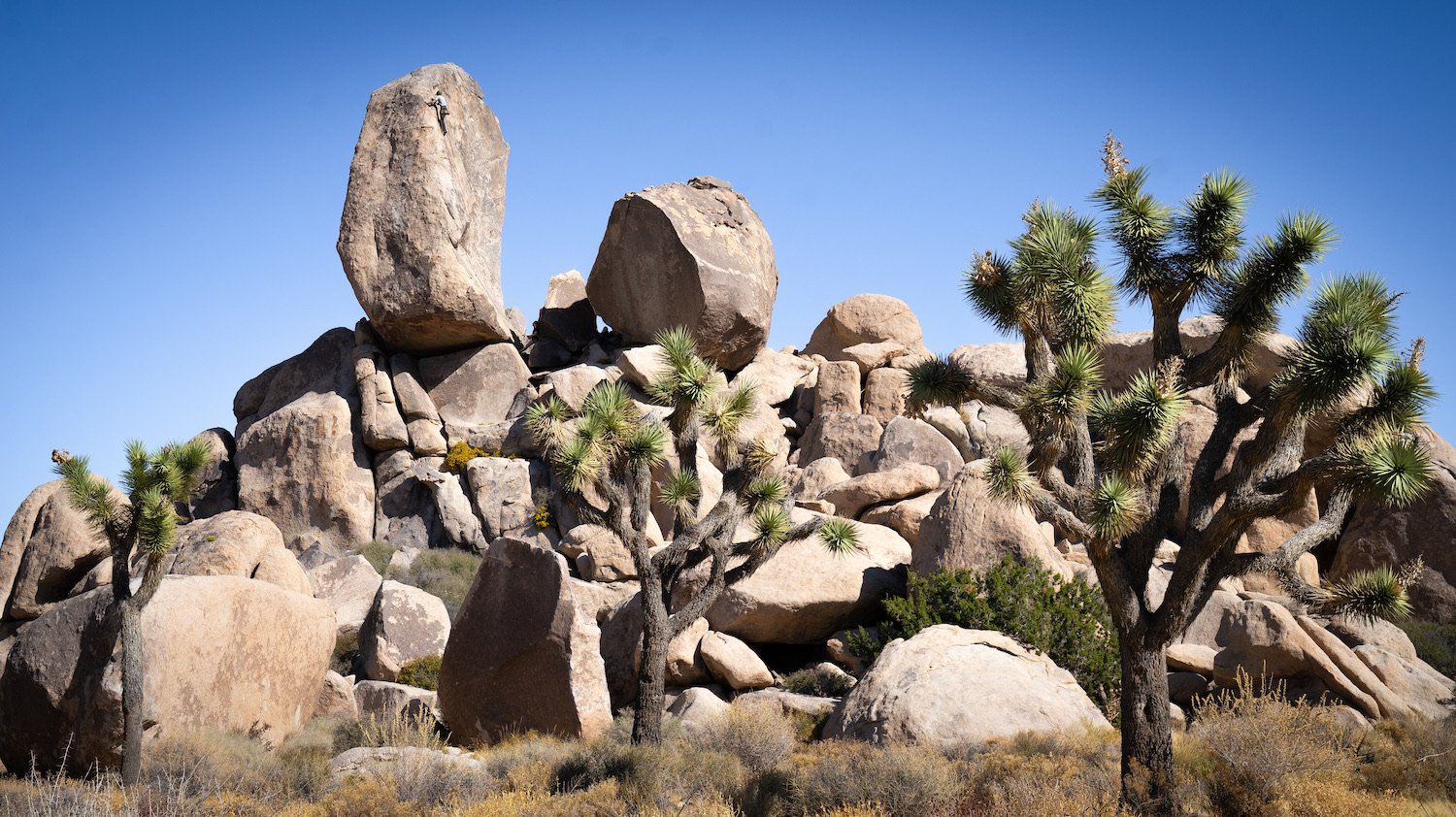
Joshua Tree National Park
Joshue Tree sits wedged between three unique ecosystems: the Colorado Desert, the San Bernardino Mountains, and the Mojave Desert. Known for its iconic Joshua Trees (which aren’t actually trees, but rather a type of yucca), the national park offers more than 8,000 climbing routes, making it the ultimate destination for SoCal rock-hoppers and climbers.
Additionally, the park also houses 300 miles of hiking trails and nine campgrounds (make sure to reserve yours in advance). Joshua Tree is a designated dark sky park, meaning you’ll have the opportunity to get awe-inspiring views of the Milky Way with minimal light pollution. While visiting, you might even spot the park’s wildlife, like desert tortoises, roadrunners, and bighorn sheep hiding amongst otherworldly, wind-forged rock formations.
Tips for Visiting Joshua Tree
- Getting There: West entrance via Highway 62 and Park Boulevard, north entrance via Twentynine Palms, or south entrance near Cottonwood Spring
- Fees: $30 per vehicle
- Best Time to Visit: Spring or fall to avoid extreme heat
- Must-Visit Attractions: Hidden Valley Nature Trail, Skull Rock, Keys View
Map of Joshua Tree National Park
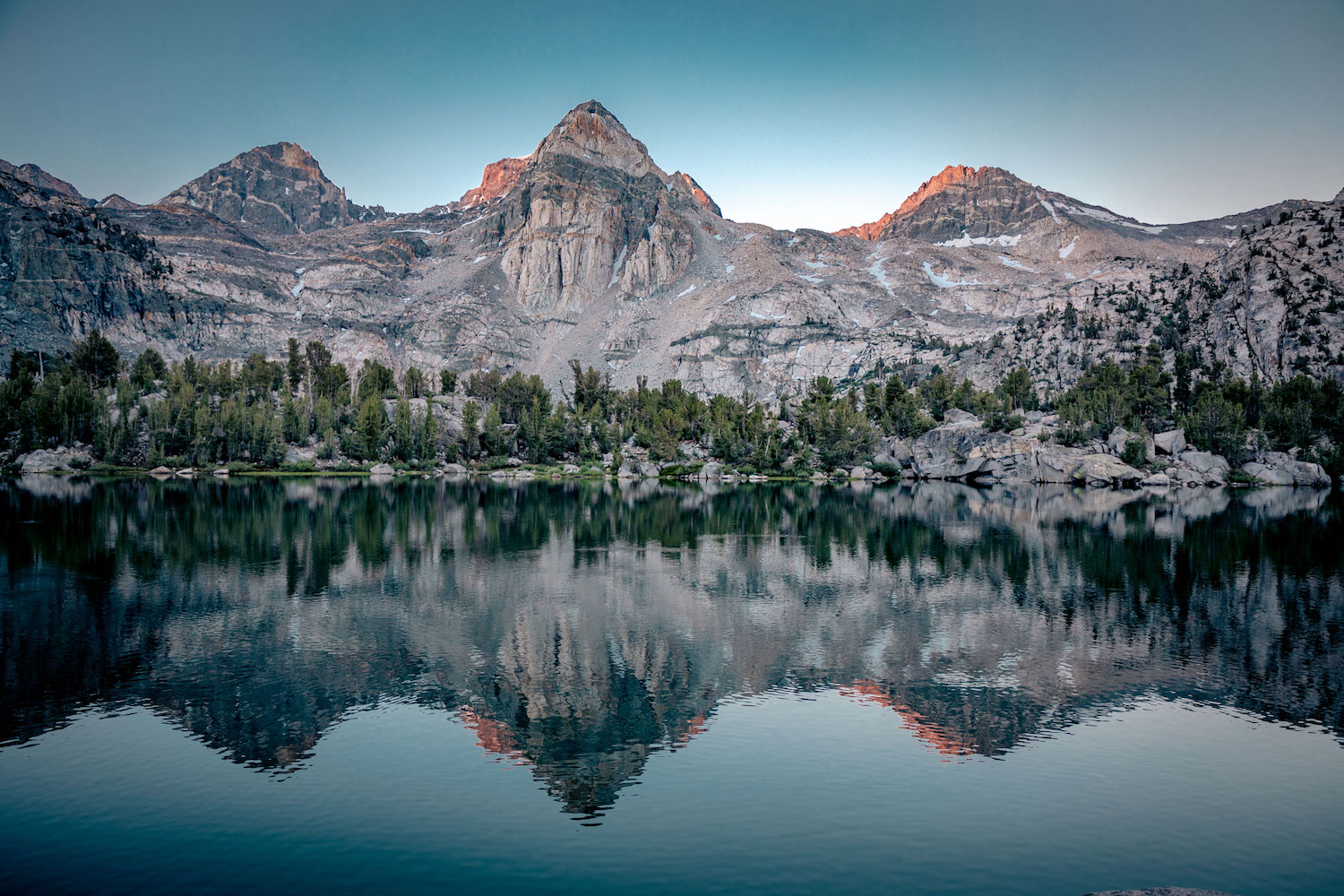
Kings Canyon and Sequoia National Park
Arguably the greatest two-for-one deal around is admission into Kings Canyon and Sequoia national parks. To the south is Sequoia National Park, home to five of the world’s biggest trees. The largest of them all is General Sherman, a giant sequoia with a towering 275-foot height and staggering 36-foot diameter. Other beloved attractions include Mount Whitney, which offers a challenge for mountaineers; Crystal Cave, which features beautiful marble stalagmites; and Moro Rock, where a 350-step ascent finishes with rewarding panoramic views of the park.
North of Sequoia, Kings Canyon (formerly known as General Grant National Park) is full of dramatic landscapes, including waterfalls, deep canyons, and winding underground caverns. Legendary conservationist John Muir once said the park rivals the beauty of Yosemite, and it even has its own granite dome, Tehipite Dome. The park encompasses 108 miles of the famous Pacific Crest Trail and 87 miles of the John Muir Trail, which connects Mount Whitney to Yosemite. If spelunking or stalagmite-gazing are your style, make sure to check out Boyden Cave and Lilburn Cave—the latter is the longest cave system in California.
Tips for Visiting Kings Canyon and Sequoia National Park
- Getting There: Sequoia’s Ash Mountain entrance via Highway 198 or Kings Canyon’s Big Stump Entrance via Highway 180
- Fees: $35 per vehicle (covers both parks)
- Best Time to Visit: Spring, when waterfalls are in full-force
- Must-Visit Attractions: General Sherman Tree, Moro Rock, Crystal Cave, Tokopah Falls, Boyden Cave
Map of Kings Canyon and Sequoia National Park
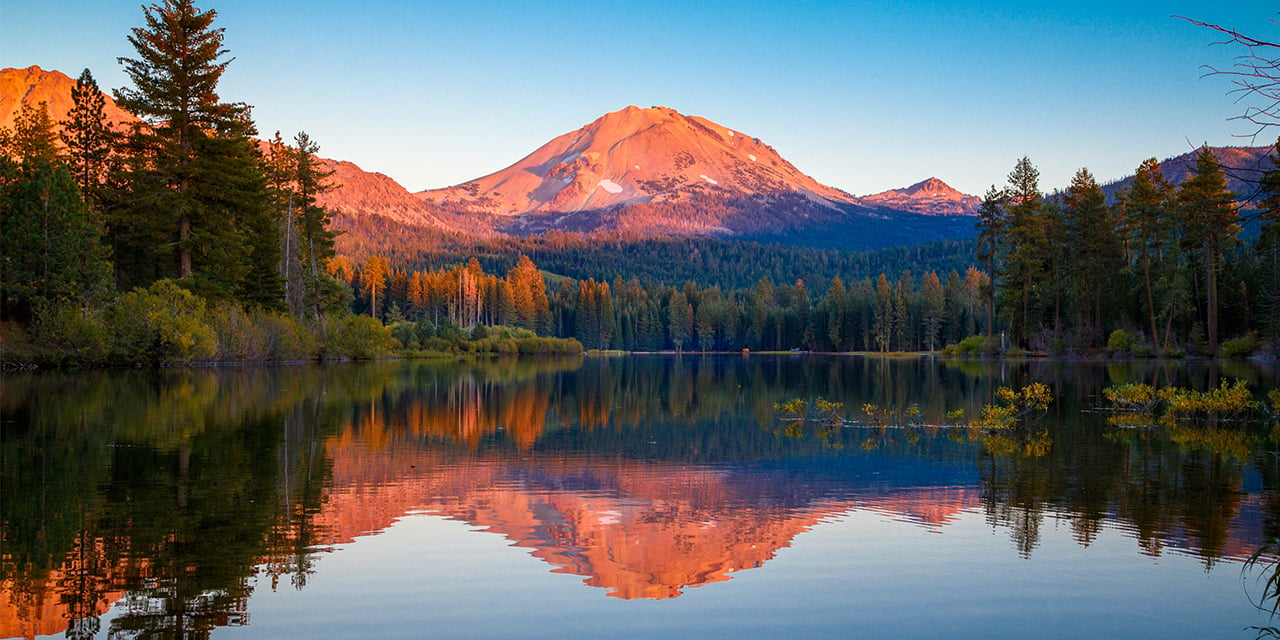
Lassen Volcanic National Park
Lassen Volcanic National Park is home to the largest plug-dome volcano in the world, Lassen Peak, which last erupted in 1917. While Lassen is the largest, the park also houses several smaller volcanoes, making it a rare place where travelers can see all four types of volcanoes (shield, cinder cone, plug dome, and stratovolcano) in one area. Even the park’s crystal-blue Lake Almanor, one of the largest in California, was formed by volcanic activity and spans 13 miles.
If you can tolerate the rotten-egg smell, Sulphur Works is the park’s most easily accessible hydrothermal area, featuring steaming fumaroles and bubbling mud pots. In the winter, Lassen turns into a snowy wonderland, receiving some of the most snowfall in the state and offering plenty of opportunities for cross-country skiing and snowshoeing. Check the NPS website for road advisories, and bring a four-by-four vehicle if you have it.
Tips for Visiting Lassen Volcanic National Park
- Getting There: Via SR 44/90 or SR 36/89
- Fees: $30 per vehicle
- Best Time to Visit: Summer for stargazing programs
- Must-Visit Attractions: Lassen Peak, Bumpass Hell, Kings Creek Falls, Sulphur Works
Map of Lassen Volcanic National Park
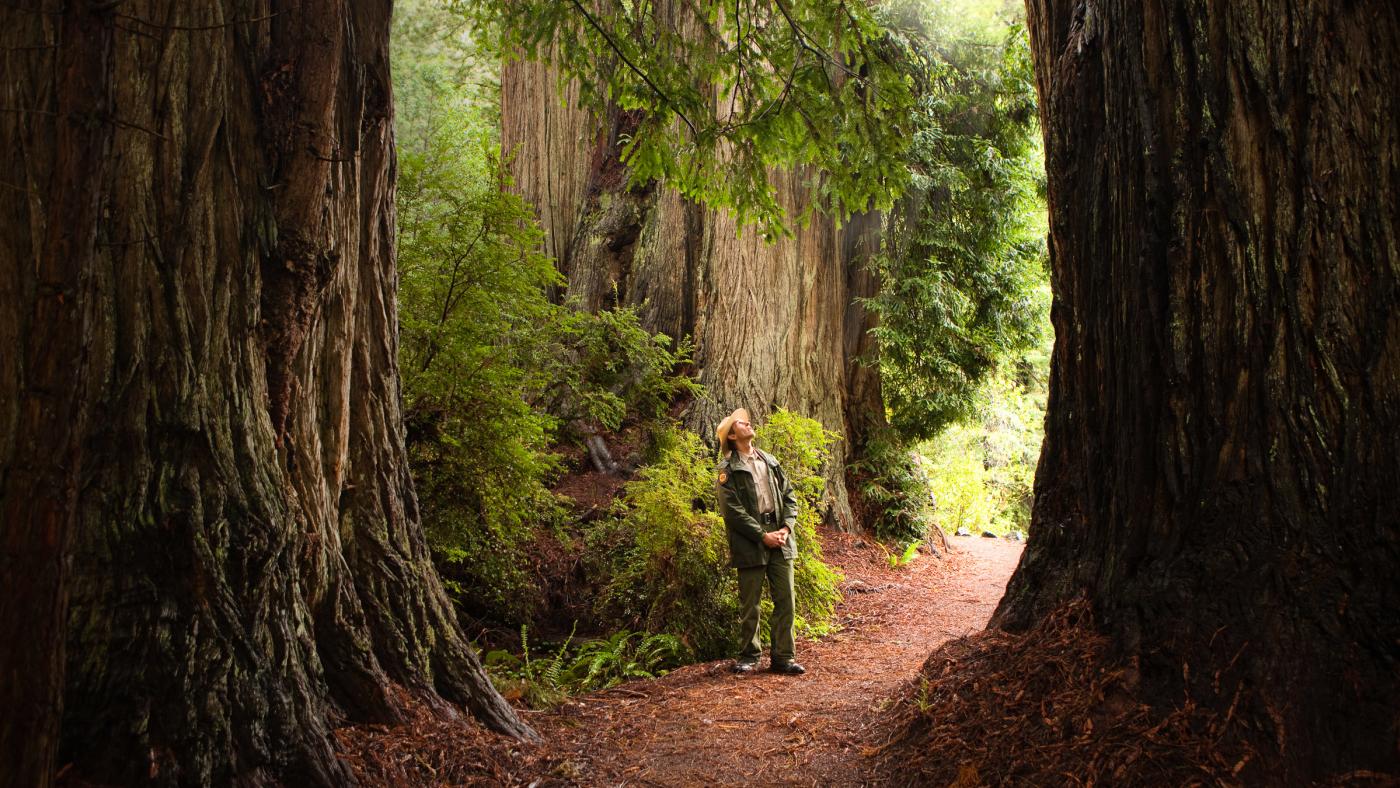
Redwood National Park
Located near the California-Oregon border, Redwood National Park is home to the planet’s tallest trees in its aptly named Tall Tree Grove. Near this grove lies the 380-foot Hyperion, the most statuesque of them all (its exact location remains a secret for conservation purposes). Though its lack of official entrances and admission fees make it easy to overlook, the park is a frequent filming location for Hollywood, with appearances in Star Wars: Return of the Jedi and the second Jurassic Park film.
Other popular attractions in the park include Fern Canyon, a photographer’s paradise; Lady Bird Johnson Grove, which offers a scenic hike through the meadows; Prairie Creek Redwoods State Park, which contains 45 percent of California’s remaining protected old-growth redwoods; and Gold Bluffs Beach, a site for serene coastal camping.
Tips for Visiting Redwood National Park
- Getting There: Via US 199 and US 101
- Fees: Free
- Best Time to Visit: Spring for fewer crowds and milder temperatures
- Must-Visit Attractions: Fern Canyon, Lady Bird Johnson Grove, Prairie Creek Redwoods, Gold Bluffs Beach
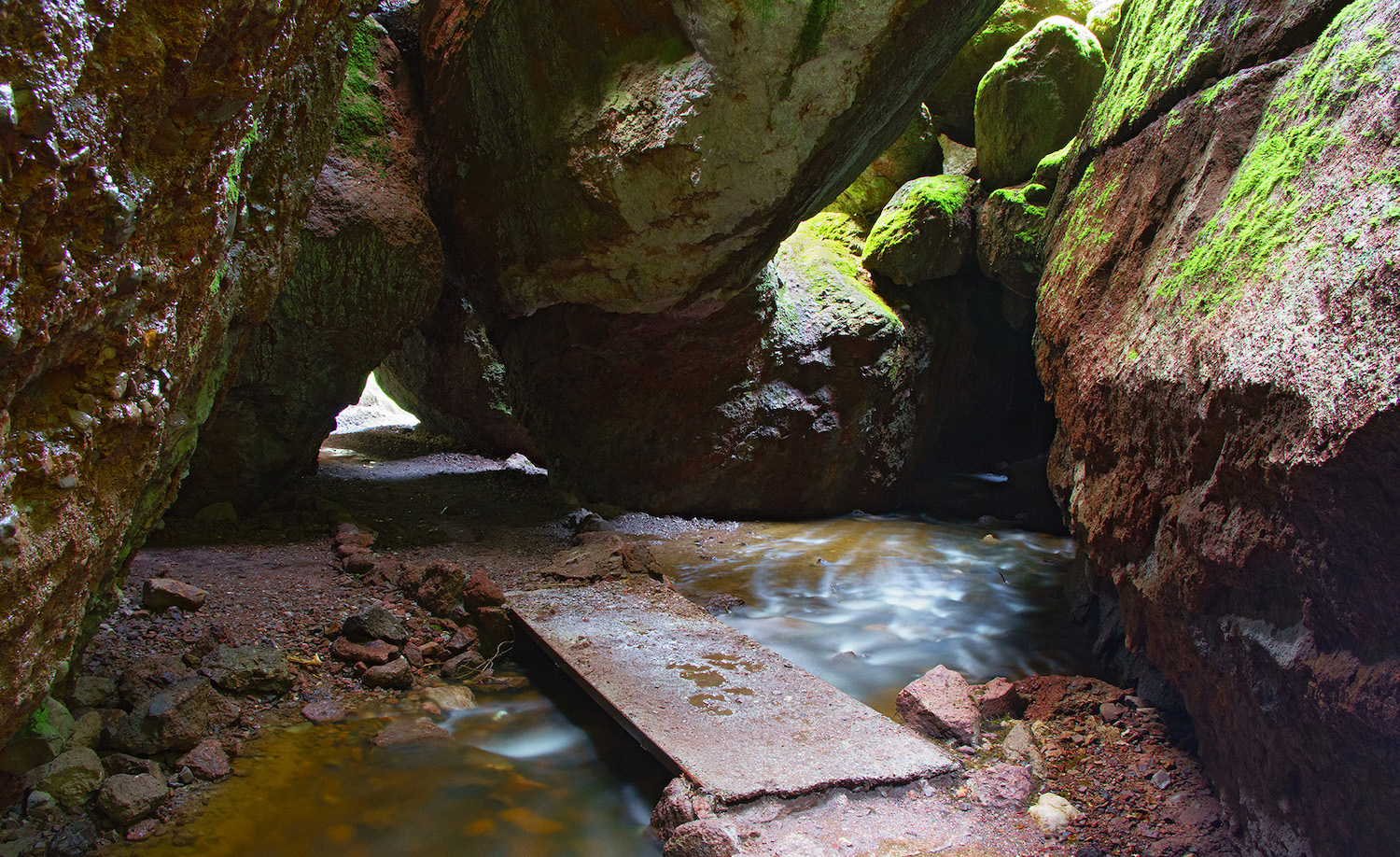
Pinnacles National Park
Pinnacles National Park may be California’s smallest national park, but its striking volcanic formations make it a must-see. Renowned for uncanny rock pillars formed over 23 million years ago, it provides over 200 rock-climbing routes.
Keep an eye out for California condors and endangered Townsend’s big-eared bats. This species of bat can be found in Bear Gulch Cave, a giant boulder cavern that closes to the public during pupping season in May through July. Experienced hikers can also take on the challenging, 6.8-mile High Peaks Trail or 5.6-mile Condor Gulch Trail for epic views of the volcanic spires.
Tips for Visiting Pinnacles
- Getting There: East and west entrances (via Highway 146 and Highway 25)
- Fees: $30 per vehicle
- Best Time to Visit: Winter to avoid summer heat
- Must-Visit Attractions: Bear Gulch Cave, Condor Gulch Trail, High Peaks Trail
Map of Pinnacles National Park
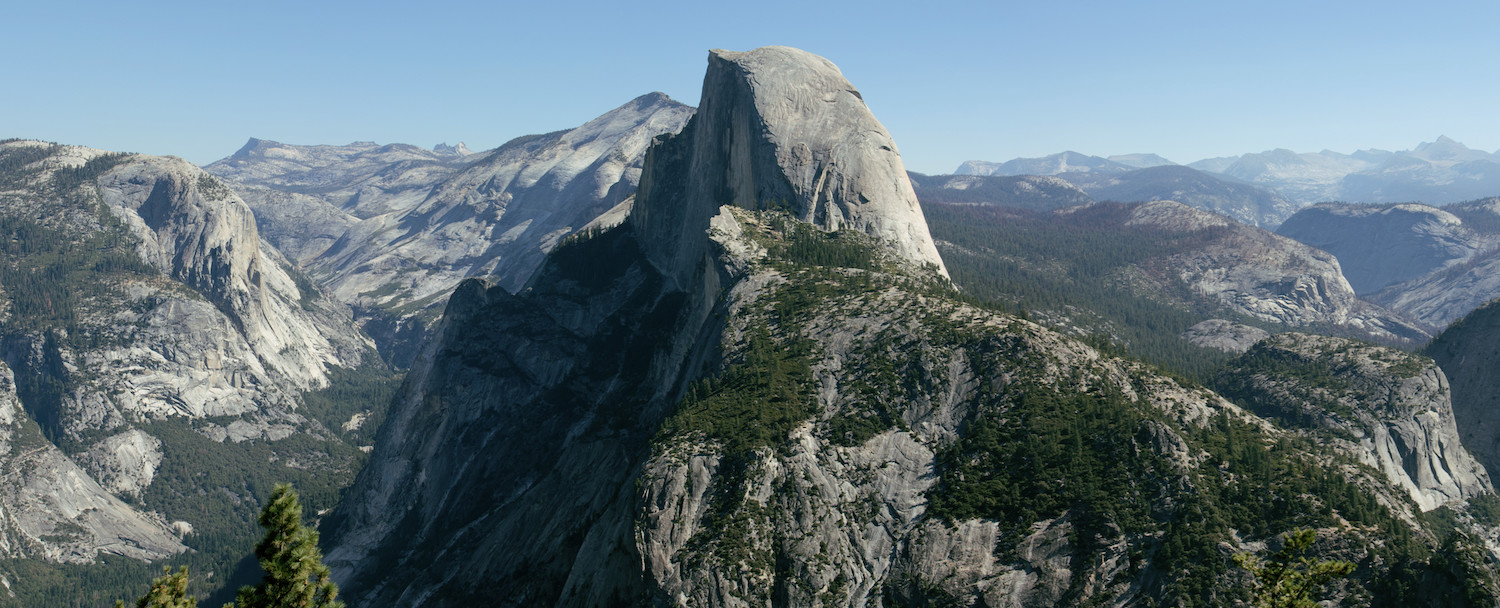
Yosemite National Park
The crown jewel of California, Yosemite National Park, was described by John Muir as the grandest “temple of nature” he ever visited. Originally, the valley was called Ahwahnee—meaning “large mouth”—by the region’s Indigenous people, a nod to the shape of the valley and the jagged “teeth” that surround its perimeter. Known for its granite cliffs, including the iconic El Capitan and Half Dome, the park also features roaring waterfalls, lush meadows, and towering sequoias.
PARTNER CONTENT
Yosemite Valley is rich in wildlife—keep your eyes peeled for deer, black bears, and even bobcats. Adventure-seekers can hike 5,000 feet to the top of Half Dome (with a permit), climb giant boulders at Camp 4, or scale Vernal Falls. Meanwhile, more cautious travelers can admire more accessible views from Glacier Point and Mirror Lake. Remember to bring your camera to capture the beauty of Yosemite Falls, one of the tallest waterfalls in North America.
Tips for Visiting Yosemite
- Getting There: Via Highway 120, Highway 140, and Highway 41
- Fees: $35 per vehicle
- Best Time to Visit: Late spring for full waterfalls
- Must-Visit Attractions: Glacier Point, Half Dome, Yosemite Falls, Vernal Falls, Ansel Adams Gallery







